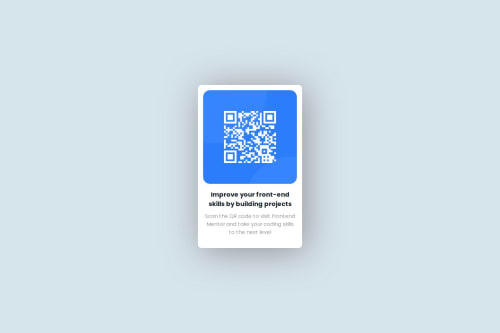QR code component Using FlexBox

Solution retrospective
I'm working on creating a responsive website using Flexbox and Grid. I also want to improve my skills in creating layouts.
What specific areas of your project would you like help with?I want you to mark issues so I can use your guide to fix my issues.
Please log in to post a comment
Log in with GitHubCommunity feedback
- P@makogeboris
Hi Prototype-113322 congrats on completing your first challenge you did great, here are a few things to review
- All content should be wrapped within landmarks. Wrap a
maintag around the .container-flex and afooterfor the attribution. - Every page should have at least one heading element typically an
h1element to provide a clear structure. Thepwith the class of .heading should be a heading element - Your image is missing an
altattribute like soalt="Qr Code to Frontendmentor.io" - Font-size should be written in
remnot px - Consider using a modern CSS reset at the start of the styles in every project. Like this one Modern CSS Reset. This will help reset a list of default browser styles.
- Avoid setting fixed
heightsandwidthson elements, as this can create problems with responsiveness and content fit. Instead, let the content andpaddingdetermine the element’s size. If necessary, usemax-widthormin-height, and prefer relative units likeremfor better adaptability. Change thewidthof the .content tomax-widthand it should be defined inrem. Remove theheightsfrom the .container-flex and .content and add this on yourbodyto properly center the card
min-height: 100vh; display: flex; align-items: center; flex-direction: column; justify-content: center; gap: 1rem;Marked as helpful - All content should be wrapped within landmarks. Wrap a
Join our Discord community
Join thousands of Frontend Mentor community members taking the challenges, sharing resources, helping each other, and chatting about all things front-end!
Join our Discord